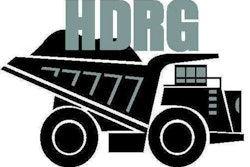
David Milne, with the Automotive Training Managers Council (ATMC), says today’s techs are facing a unique challenge rarely seen before.
“We are currently training technicians for jobs that we don’t know what they’ll be like,” he says, adding that the continual evolution of on-board computers has pushed available training to its limits. “Throughout (the technicians’) careers, probably every component on that truck is going to have an electrical tie in with it.”
“What is a vehicle now,” Tom Kotteno with Snap-on Nexiq asks. “It is a group of computers; a group of sensors.”
Darry Stuart, President and CEO of DWS Fleet Management Services, says that while technicians’ skills can vary, one asset is a must.
“They need a CDL,” he says. “That’s number one. If for nothing else, that training gives them some basic awareness and basic repair skills.”
After techs have gone through proper basic training and certification programs, they’re ready to hit the job market.
However, Stuart says potential employers need to understand what the recent graduates are looking for.
“They need benefits at a reasonable rate,” he says. “They want holidays off equal to the office staff. They want weekends off and overtime pay.”
Stuart says shops with the lowest tech turnover rates have an effective mix of base pay and pay for going the extra mile.
He also suggests digging deeper into your wallet to find and keep top technicians – to the tune of $1 to $5 more per hour over industry averages of $24-$28 per hour. He also suggests offering pay incentives for employees who obtain additional certifications.
“Profit isn’t going to come from the outside,” he says. “It will come from the inside in efficiencies.”
Shop organization and efficiencies
If you’re paying top of the market wages for top of the line techs, Stuart says shop efficiencies will be key driving profits.
He cites a clean workplace environment as the lynchpin in running an effective and profitable shop.
“You’ve got to make sure your techs can go in to find a tool and that he’s not wasting any time to find it,” he says, advocating supermarket-style parts and tool organization. “Think of your cost as $1 per minute. How many dollars do your techs waste walking around looking for things because the shop is unorganized?”
How to pick training
Once you’ve found a good group of techs and have their work habits organized, you’ve got to keep their skill set sharp.
With hundreds of different types of training and nearly as many “schools”, Milne says picking the right type of training can be a daunting task.
“The first step is to evaluate tech staff on their training needs by identifying knowledge gaps,” he said.
Once you’ve identified training candidates, picking the right course of study can pose a challenge.
“Good training is based upon good science and generally accepted practices,” Milne says, adding that a good training program overview clearly states the subject, identifies a target audience, its delivery method, provides a projected class size, tells you the expected result and should include training on any innovations.
Milne said an effective way to determine if a training opportunity is good for you is to evaluate it as follows:
Needs analysis: The program developers should have conducted an accurate needs analysis outlining why this training is necessary.
Learning objectives: The training provider should clearly state the knowledge and skills that trainees will learn as a result of the training.
Program materials: The provider should clearly list any materials or take-aways associated with instruction.
Delivery methods: The program should list if the instruction hands on, on-line or self-study.
Sustainable: Does provider have a method to assure that training keeps up with the times?
If the training program suits your needs, Milne says, feel free to proceed. But, bear in mind the old saying; “That which is not used is eventually lost.”
“Use follow up discussions with attendees to verify successful training and ask them to share what they learned with coworkers,” he said.










